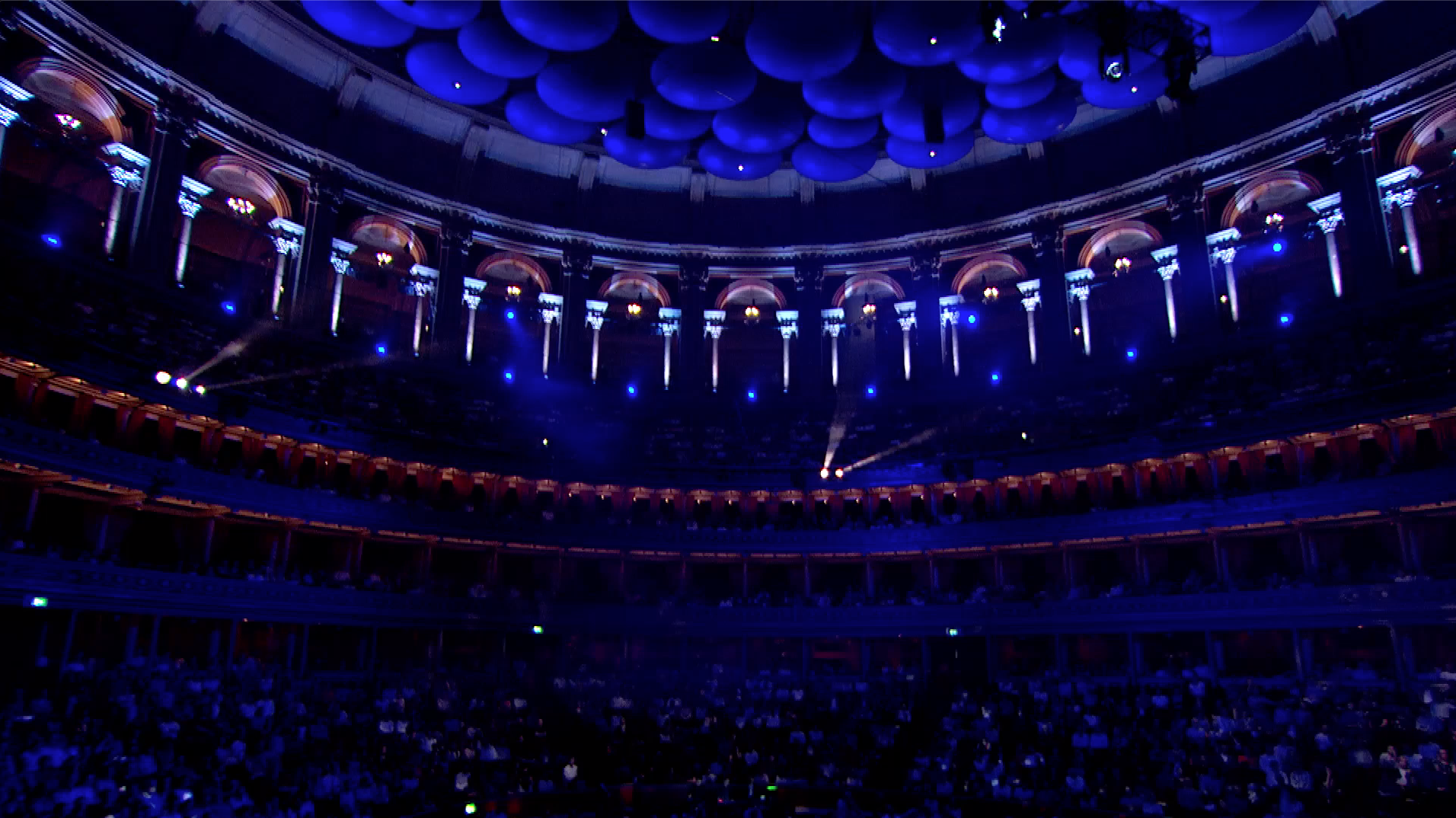Beethoven’s ‘Eroica’
Friday 28 August, 7.30pm–c9.00pm

Hannah Kendall
Tuxedo: Vasco ‘de’ Gama c5’
Â鶹ԼÅÄ commission: world premiere
Eric Whitacre
Sleep 6’
Aaron Copland
Quiet City 10’
Ludwig van Beethoven
Symphony No. 3 in E flat major, ‘Eroica’ 47’
Â鶹ԼÅÄ Singers
Â鶹ԼÅÄ Symphony Orchestra
Sakari Oramo conductor
Nicholas Chalmers conductor

This concert is broadcast live by Â鶹ԼÅÄ Radio 3 at 7.30pm and on Â鶹ԼÅÄ Two at 8.00pm. You can listen to any of the 2020 Proms concerts on Â鶹ԼÅÄ Sounds or watch on Â鶹ԼÅÄ iPlayer until Monday 12 October.
Welcome to tonight’s Prom
It is a cruel irony that Beethoven, a composer unfortunate in many ways during his lifetime, should have his 250th-anniversary celebrations silenced by a global pandemic. How fitting, then, that the ‘Eroica’ Symphony – a work that so perfectly captures his indefatigable spirit – should provide the finale to the first live concert in the 2020 Proms season. After six weeks of archive Proms performances, tonight the Â鶹ԼÅÄ Symphony Orchestra and its Chief Conductor Sakari Oramo present Beethoven’s musical tour de force live from the Royal Albert Hall alongside three other works, each with a distinctly American flavour.
Opening the concert is a world premiere from Hannah Kendall, whose Tuxedo: Vasco ‘de’ Gama is inspired by the work of Brooklyn-born artist Jean-Michel Basquiat. Following a performance of Eric Whitacre’s Sleep, sung by the Â鶹ԼÅÄ Singers, we encounter a desolate New York soundscape, conjured by Aaron Copland in his expansive piece for trumpet, cor anglais and strings, Quiet City.
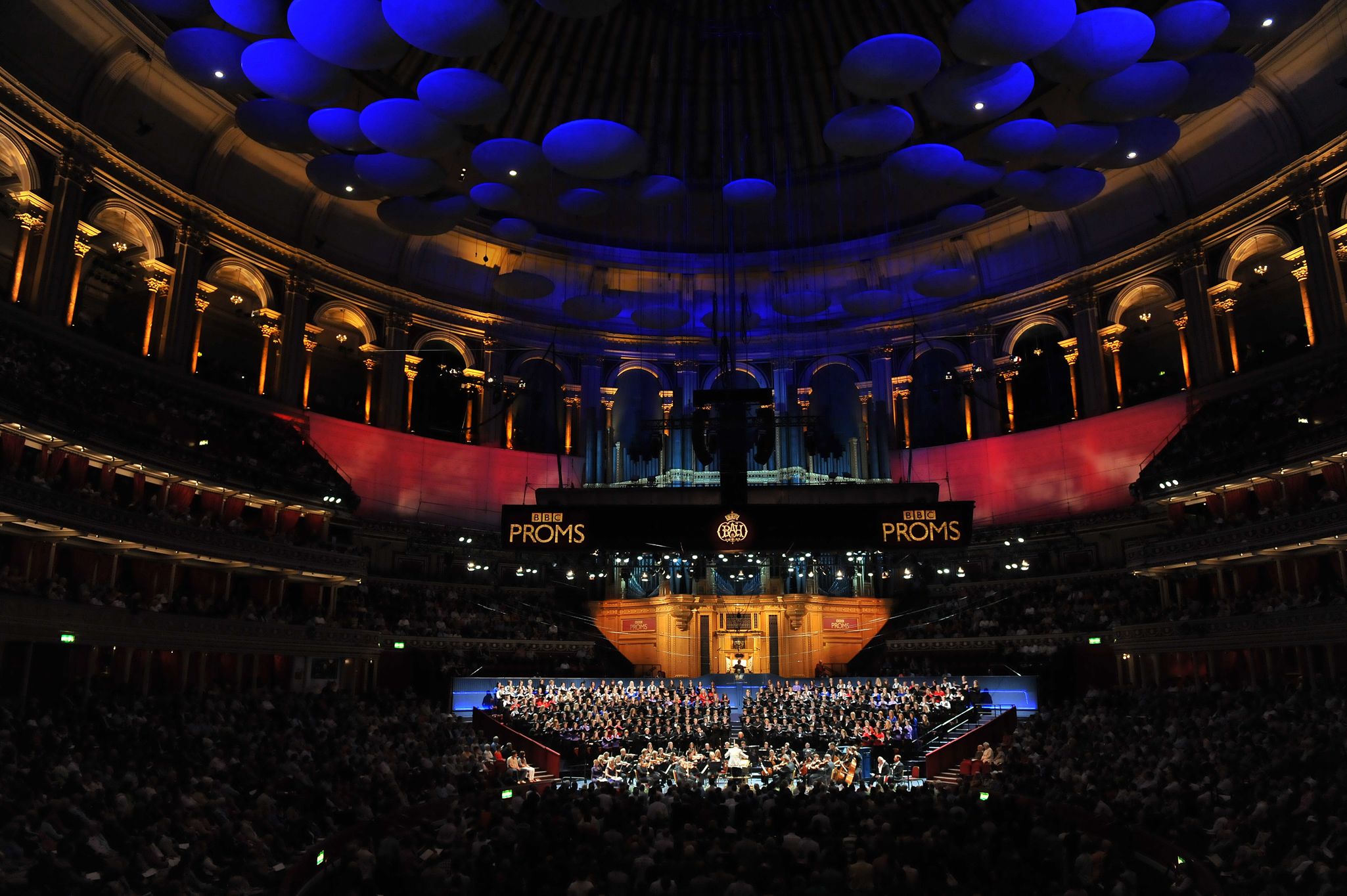
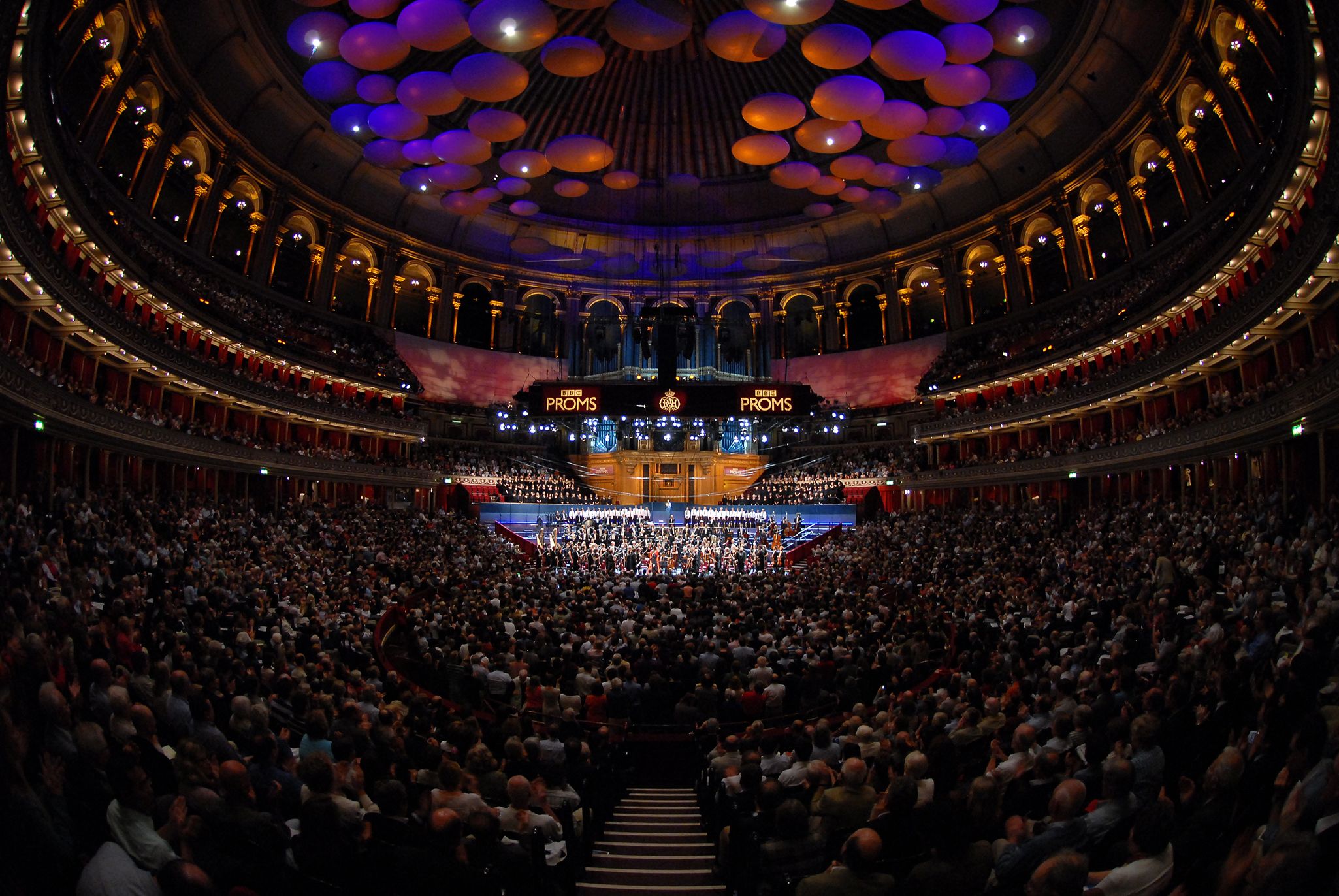
Welcome to tonight's Prom
It is a cruel irony that Beethoven, a composer unfortunate in many ways during his lifetime, should have his 250th-anniversary celebrations silenced by a global pandemic. How fitting, then, that the ‘Eroica’ Symphony – a work that so perfectly captures his indefatigable spirit – should provide the finale to the first live concert in the 2020 Proms season. After six weeks of archive Proms performances, tonight the Â鶹ԼÅÄ Symphony Orchestra and its Chief Conductor Sakari Oramo present Beethoven’s musical tour de force live from the Royal Albert Hall alongside three other works, each with a distinctly American flavour.
Opening the concert is a world premiere from Hannah Kendall, whose Tuxedo: Vasco ‘de’ Gama is inspired by the work of Brooklyn-born artist Jean-Michel Basquiat. Following a performance of Eric Whitacre’s Sleep, sung f by the Â鶹ԼÅÄ Singers, we encounter a desolate New York soundscape, conjured by Aaron Copland in his expansive piece for trumpet, cor anglais and strings, Quiet City.


Hannah Kendall (born 1984)
Tuxedo: Vasco ‘de’ Gama
(2020)
Â鶹ԼÅÄ commission: world premiere

T uxedo: Vasco ‘de’ Gama takes its title from Jean-Michel Basquiat’s iconic 1982–3 artwork Tuxedo, a collection of 16 diagrammatic block pieces that come together to form a figure adorned with Basquiat’s trademark three-point crown symbol. It highlights recurring notions of majesty in his output, as does the tuxedo itself, which is a garment associated with luxury and elegance.
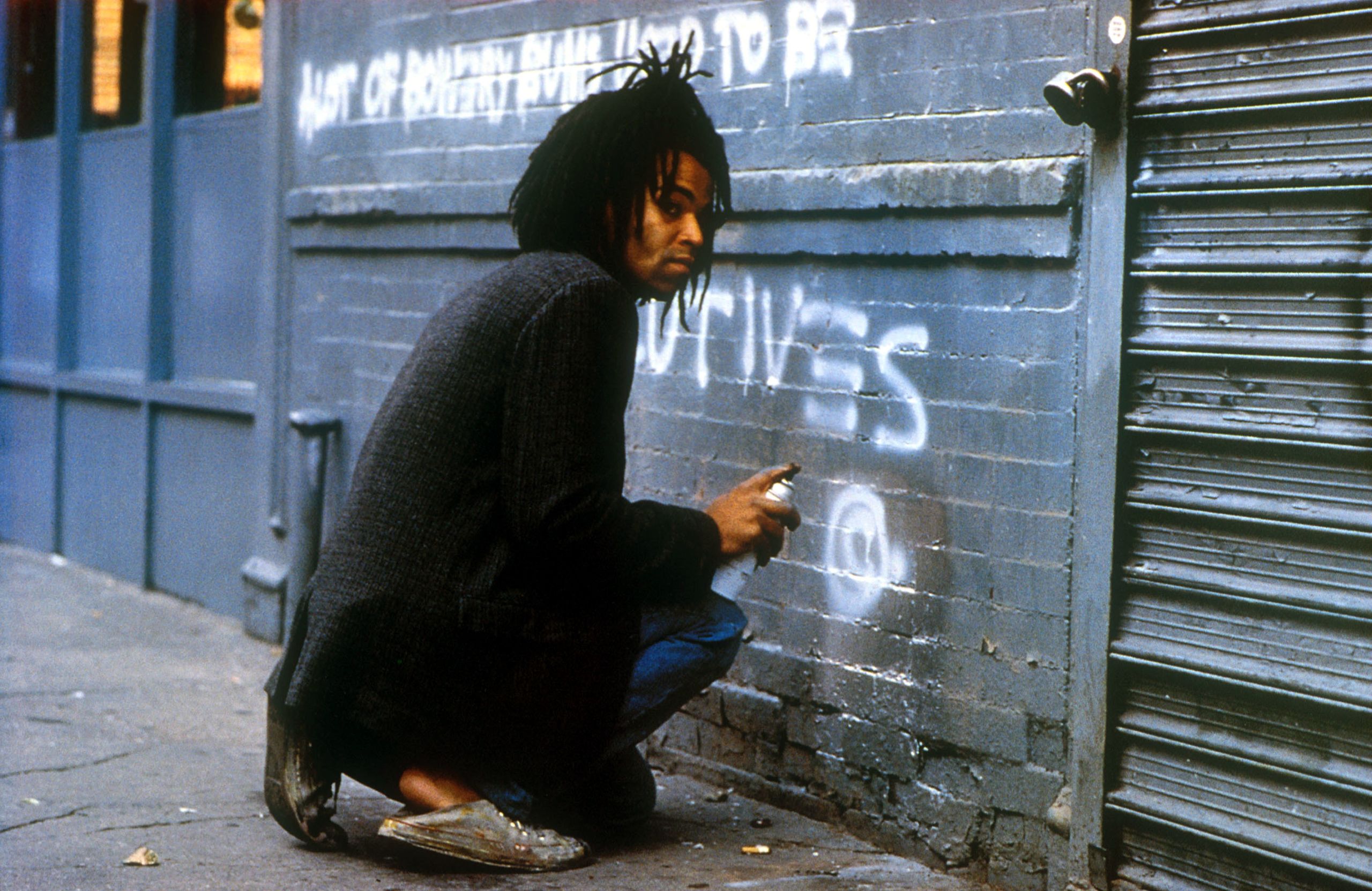
It was the Brooklyn-born artist and graffiti prodigy Jean-Michel Basquiat (pictured) who created Tuxedo, the iconic matrix of hieroglyphs, symbols and words that inspired Kendall’s piece (Eleventh Street Production/Jon Kilik/Miramax/Collection CSFF/Bridgeman Images)
It was the Brooklyn-born artist and graffiti prodigy Jean-Michel Basquiat (pictured) who created Tuxedo, the iconic matrix of hieroglyphs, symbols and words that inspired Kendall’s piece (Eleventh Street Production/Jon Kilik/Miramax/Collection CSFF/Bridgeman Images)
A multitude of Basquiat’s thematic preoccupations are displayed in the intricate hand-drawn and -written iconographic detail, encompassing a variety of histories. Indeed, his reference to Vasco da Gama (written as ‘Vasco de Gama’), the first European to voyage to Asia by sea, offers a commentary on exploration and the seeds of globalisation and multiculturalism: two important themes in the context of the year 2020.
The music moves between bright and buoyant moments of high energy and expansive stillness, underpinned by the incorporated harmonicas, which also function as a nod to the blues. Basquiat often drew attention to historical and contemporary matters of the African Diaspora. In a similar fashion, I have included a transcription of ‘Wade in the Water’, a traditional African-American spiritual, for music box.
Programme note © Hannah Kendall
Eric Whitacre (born 1970)
Sleep
(2000, rev. 2001)

Â鶹ԼÅÄ Singers
Nicholas Chalmers conductor
Setting a text to music is a precious process, and typically one in which the two components become so intertwined that one cannot exist without the other. But when, in 2000, Eric Whitacre composed a setting of Robert Frost’s 1922 poem ‘Stopping by Woods on a Snowy Evening’, he found himself barred from publishing the text. Frost’s poem was to remain under copyright until 2019, so Whitacre, having already crafted an a cappella choral setting of Frost’s words, was forced to change tack. Just a day after receiving the request to create new words to go with Whitacre's existing music, his friend, the poet Charles Anthony Silvestri, responded with the poem ‘Sleep’ – a text which picks up on the themes of rest and resignation that underpin Frost’s poem, while deftly matching Whitacre’s original setting in structure, theme and tone.
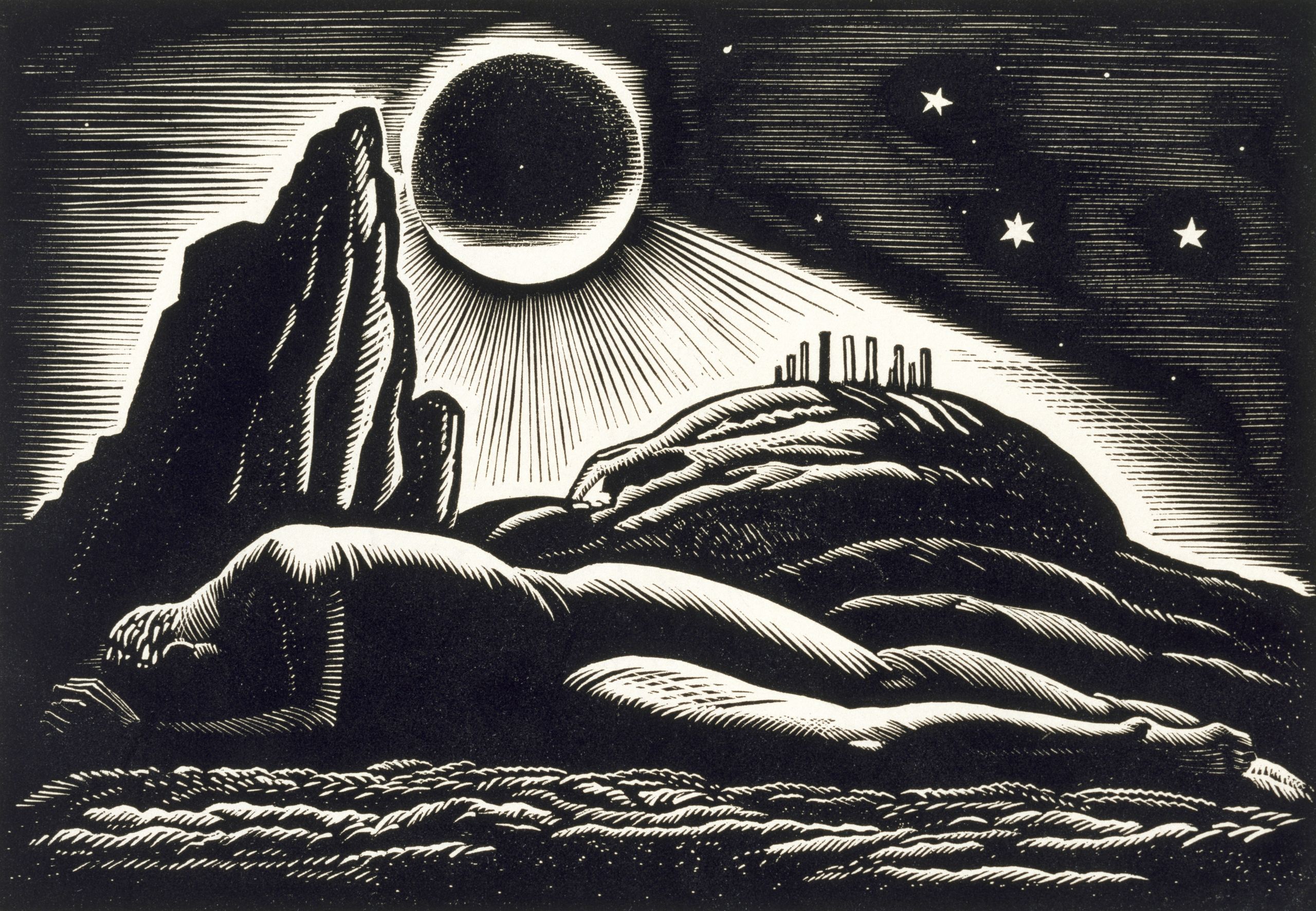
Sleep is built on an intricate series of close chord clusters which move almost imperceptibly from one to the next, with virtually every syllable treated as an isolated moment. It is characteristic of Whitacre’s style and creates a shimmering, almost hypnotic, atmospheric effect. ‘When I started singing in a choir,’ says Whitacre. ‘I remember giggling or tearing up. I still do when I hear them, I just feel them in my body.’ The work, which begins quietly and with restraint, arches towards the soaring poignancy of the repeated final line, and its sombre undertones of eternal rest: ‘As I surrender unto sleep, / As I surrender unto sleep.’
Programme note © Jo Kirkbride Jo Kirkbride is Chief Executive of the Dunedin Consort and a freelance writer on classical music. She studied Beethoven’s slow movements for her PhD and writes regularly for the LSO, LPO, London Sinfonietta and Snape Proms.
Aaron Copland (1900–90)
Quiet City
(1939, rev. 1940)
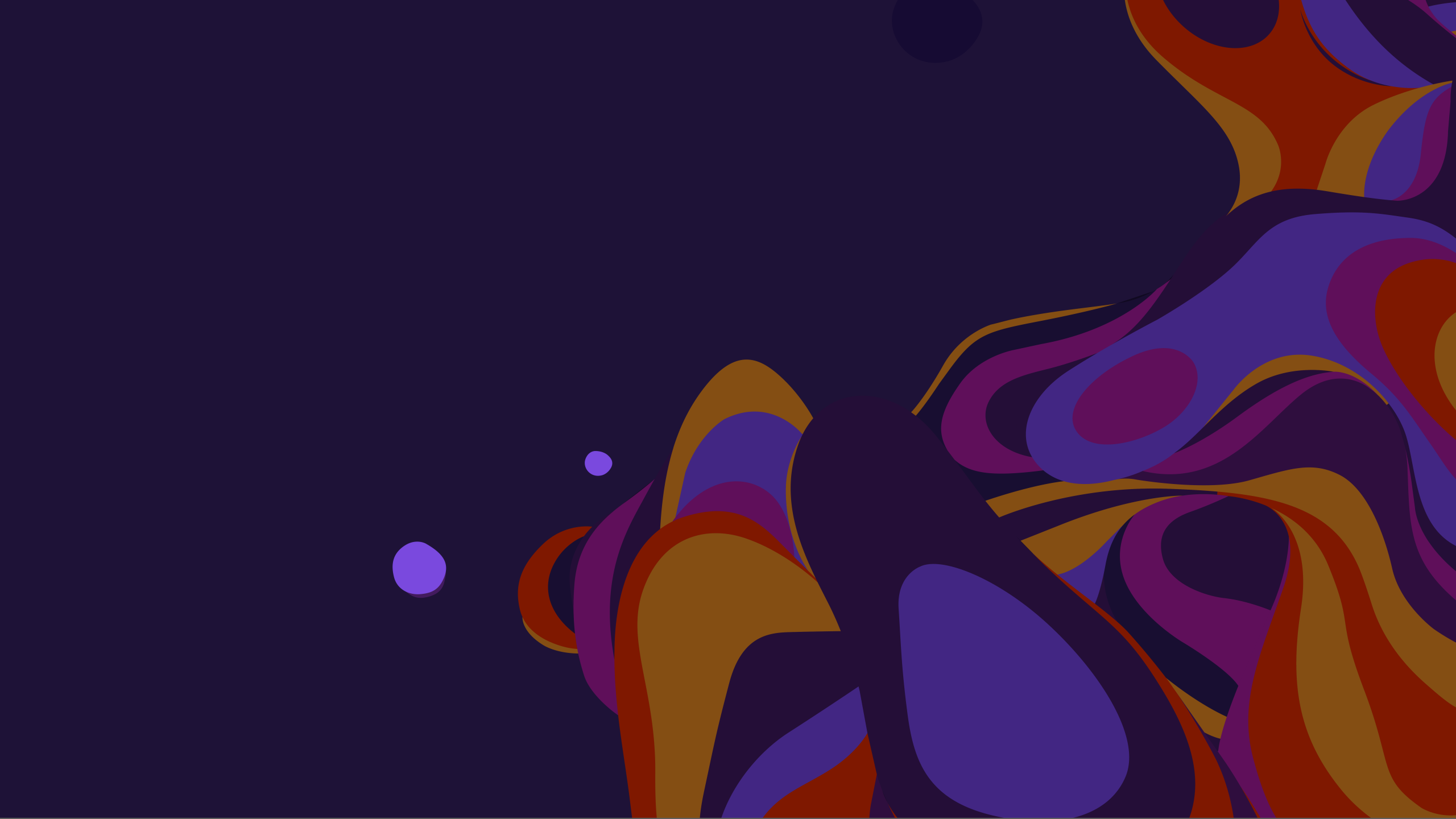
Philip Cobb trumpet
Alison Teale cor anglais
Although Copland’s name is now synonymous with American music, it was thanks to his time spent studying with the modernists in Paris, and in particular to his lessons with Nadia Boulanger, that he was first persuaded to explore his American heritage. It was to be the making of him: when he returned to the USA in the mid-1920s, his music would become a vital cultural force, speaking directly to the average American citizen during the difficult years of the Great Depression.

A worker pauses to admire the New York City skyline; the same night-time scene was inspiration for Irwin Shaw’s 1939 play Quiet City, for which Copland wrote incidental music (Underwood Archives/UIG/Bridgeman Images)
A worker pauses to admire the New York City skyline; the same night-time scene was inspiration for Irwin Shaw’s 1939 play Quiet City, for which Copland wrote incidental music (Underwood Archives/UIG/Bridgeman Images)
Copland became iconic for his rousing Rodeo music and characterful appropriation of traditional folk song in his other two popular ballets, Billy the Kid and Appalachian Spring, but Quiet City is no less ‘American’ for its rather more understated score. It began life as incidental music for a 1939 play of the same name by Irwin Shaw. Billed as a ‘realistic fantasy’, Shaw’s play captures the shifting images of New York City by night – although in the end it was a flop and closed after only a few performances.
A year later Copland compiled the fragments he had composed for the play into a continuous orchestral score, adapting the original instrumentation (for trumpet, saxophone, clarinets and piano) for trumpet, cor anglais and string ensemble. The strings form an iridescent backdrop to the work, rising and falling in shifting swells to portray the changing face of the city. Above this, the lone trumpeter (who, in Shaw’s play, reminds the troubled protagonist of his brother cum alter ego) intones a mixed song of nostalgia and melancholy, regret and anxiety.
Programme note © Jo Kirkbride
Ludwig van Beethoven (1770–1827)
Symphony No. 3 in
E flat major, Op. 55, ‘Eroica’
(1803)

1 Allegro con brio
2 Marcia funebre: Adagio assai
3 Scherzo: Allegro vivace – Trio
4 Finale: Allegro molto – Poco andante – Presto
There is no getting away from it – Beethoven’s Third Symphony marks a significant turning point, not just for Beethoven’s own symphonic style, but for the language and history of Western classical music as a whole. In its unprecedented length, technical demands and sweeping aesthetic ideals, it far exceeds any symphony ever composed before. With his first two symphonies Beethoven had challenged the public, pushing the boundaries of form and harmony while developing strands first glimpsed in the works of Haydn and Mozart, but the ambition of the ‘Eroica’ Symphony is something else.
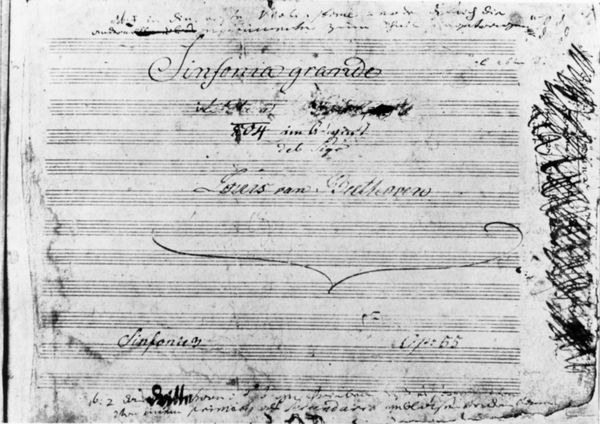
The 1803 title-page of Beethoven’s ‘Eroica’ Symphony; the original dedication to Napoleon was scratched out so violently that a hole was made in the paper (Lebrecht Music Arts/Bridgeman Images)
The 1803 title-page of Beethoven’s ‘Eroica’ Symphony; the original dedication to Napoleon was scratched out so violently that a hole was made in the paper (Lebrecht Music Arts/Bridgeman Images)
The defiance of the ‘Eroica’, the weightiness of its themes, the grandeur of its huge symphonic arch, fit are all so bound up with the renewed sense of purpose that Beethoven set out the year before in his letter known as the ‘Heiligenstadt Testament’ – in which he resolved to ‘remain firm and endure’ amid the onset of his deafness – that it is difficult to set them apart. But Beethoven gave away little about the symphony’s relation to his own personal state of mind. Instead, he dedicated the symphony to Napoleon, whose life and legacy are described over the course of its four movements: from the grand ambition and heroic struggles of the Allegro, through the projection of his death in the funereal Adagio, to the buoyant Scherzo and celebratory Finale, which together sound a note of hope for change, the brilliant new aftermath of the French Revolution.
However, following Napoleon’s decision to crown himself as Emperor, Beethoven withdrew the dedication, and the work was instead titled ‘Sinfonia eroica … composta per festeggiare il sovvenire di un grand Uomo (‘Heroic Symphony … composed to celebrate the memory of a great man’). And it is, truly, a heroic symphony. From the jolt of the opening chords to the clamour of the Finale, with its furious strings and vibrant brass fanfares, it is a celebration of the symphony as much as it is the story of any one man’s personal journey.
Programme note © Jo Kirkbride
Biographies
Sakari Oramo conductor
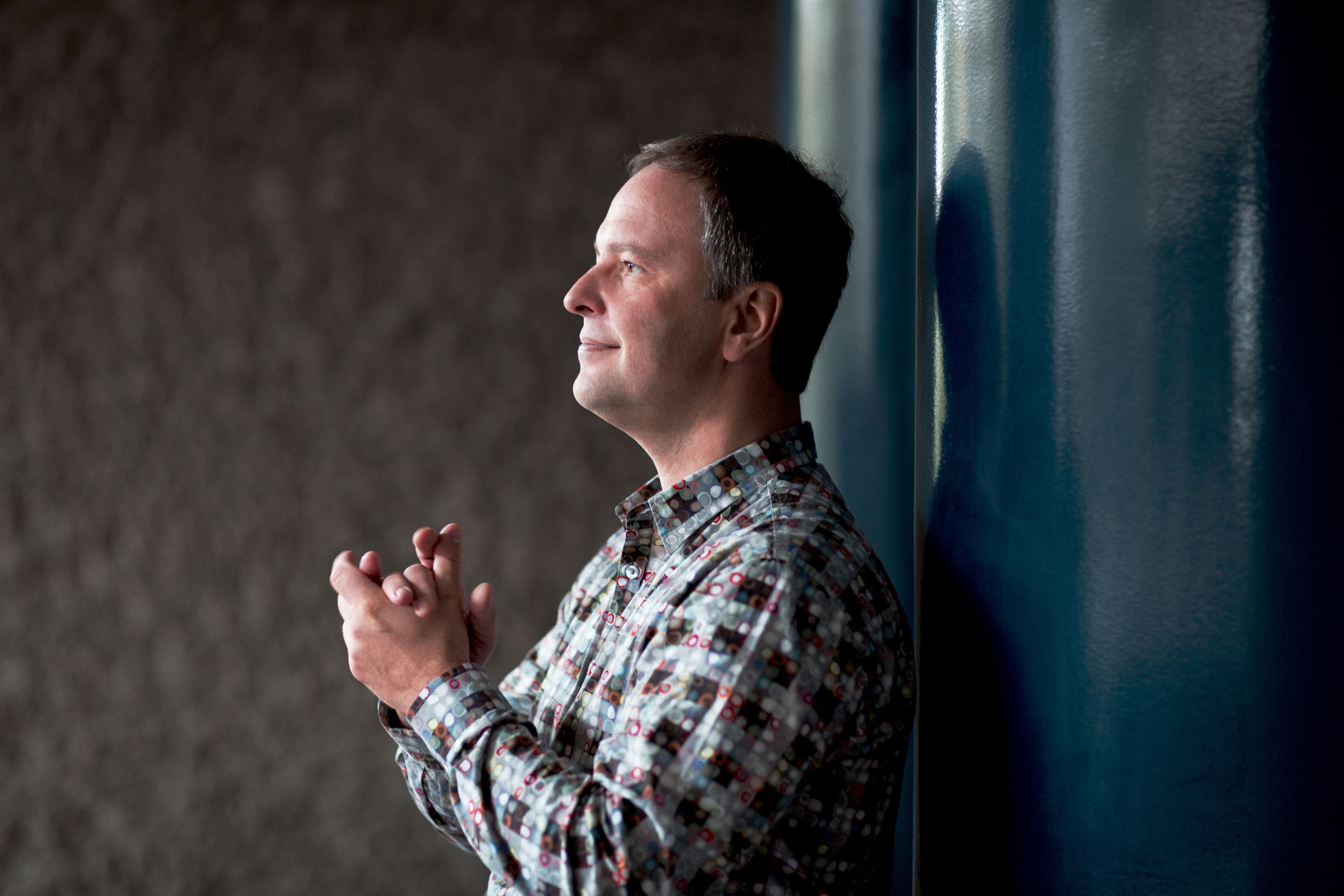
Sakari Oramo (Benjamin Ealovega)
Sakari Oramo (Benjamin Ealovega)
Sakari Oramo is Chief Conductor of both the Â鶹ԼÅÄ Symphony and Royal Stockholm Philharmonic orchestras. He was Music Director of the City of Birmingham Symphony Orchestra between 1998 and 2008 and has served as the Finnish Radio Symphony Orchestra’s Honorary Conductor since 2012, following a decade as its Chief Conductor.
Guest engagements during the 2019–20 season included returns to the Finnish Radio Symphony Orchestra, Deutsches Symphonie-Orchester Berlin and Orchestre de Paris. Other recent highlights include concerts with the Berlin, Czech, New York and Vienna Philharmonic orchestras, Boston Symphony Orchestra and Staatskapelle Dresden.
The 2020–21 season will be his seventh with the Â鶹ԼÅÄ SO and his 13th and final season as Chief Conductor of the RSPO. With both orchestras he continues to champion new and rarely performed works, including Betsy Jolas’s Letters from Bachville and the world premiere of Outi Tarkiainen’s The Ring of Fire and Love.
Recent recordings with the Â鶹ԼÅÄ SO include William Alwyn’s opera Miss Julie, Ethel Smyth’s Mass in D (plus the overture to her opera The Wreckers), orchestral works by Sibelius, Rachmaninov’s Piano Concertos Nos. 2 and 3 with Yevgeny Sudbin and Florent Schmitt’s Symphony No. 2 and Antoine et Cléopâtre suites.
Nicholas Chalmers conductor
Proms Debut Artist
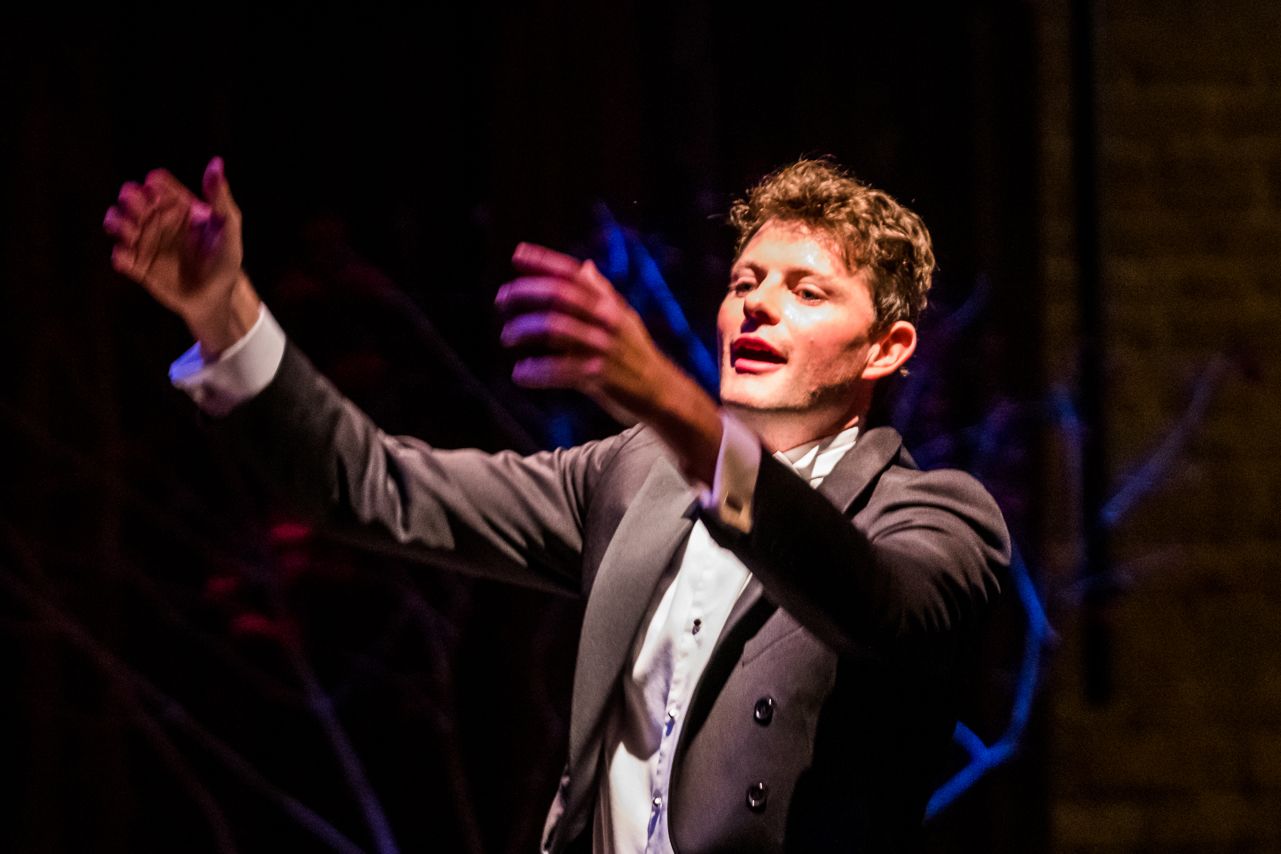
Nicholas Chalmers (Gary Summers)
Nicholas Chalmers (Gary Summers)
Nicholas Chalmers has been the Artistic Director of Nevill Holt Opera in Leicestershire since the festival began in 2013. In addition, he is a founding artistic director of Second Movement, whose ‘Rough for Opera’ series has commissioned works from more than 40 young composers and librettists.
He is the Associate Conductor of the London Oriana Choir and Organist and Director of Music at St Jude-on-the-Hill, Hampstead Garden Suburb. He has served on the music staff at English National Opera, Westminster Abbey, St Paul’s Cathedral and Chichester Cathedral.
With Nevill Holt Opera he has conducted The Marriage of Figaro, Così fan tutte, The Magic Flute, L’elisir d’amore, Rigoletto, La bohème, Tosca, Carmen, The Turn of the Screw, A Midsummer Night’s Dream and Noye’s Fludde. For Second Movement and Northern Ireland Opera he has conducted operas by Mozart, Rimsky-Korsakov, Menotti, Britten, Bernstein and Thomas Adès.
He works with major UK orchestras and choirs, including the Â鶹ԼÅÄ Singers, Britten Sinfonia and City of Birmingham Symphony Orchestra.
Scheduled future engagements include Bernstein’s A Quiet Place for the Royal Opera, Covent Garden, where he is a Senior Associate Artist (Opera) and also leads the Sing at ROH programme.
Â鶹ԼÅÄ Symphony Orchestra
The Â鶹ԼÅÄ Symphony Orchestra has been at the heart of British musical life since it was founded in 1930. It plays a central role in the Â鶹ԼÅÄ Proms, usually performing around a dozen concerts each season.
Chief Conductor Sakari Oramo leads the orchestra tonight in the first of the 2020 season’s live concerts, whilst Principal Guest Conductor Dalia Stasevska will take the helm for the Last Night celebrations. In addition to performances with Oramo, Stasevska and Creative Artist in Association Jules Buckley, the Â鶹ԼÅÄ SO works regularly with Semyon Bychkov, holder of the Günter Wand Conducting Chair, and Conductor Laureate Sir Andrew Davis.
The Â鶹ԼÅÄ SO performs an annual season of concerts at the Barbican, where it is Associate Orchestra, and looks forward to being part of a series of concerts streamed live from the Barbican Hall. Its commitment to contemporary music is demonstrated by a range of premieres each season, as well as Total Immersion days devoted to specific composers or themes. The vast majority of its performances are broadcast on Â鶹ԼÅÄ Radio 3 and available for 30 days afterwards on Â鶹ԼÅÄ Sounds.
As part of Get Involved, the Â鶹ԼÅÄ Symphony Orchestra and Chorus, alongside the Â鶹ԼÅÄ Concert Orchestra, Â鶹ԼÅÄ Singers and Â鶹ԼÅÄ Proms, offer family concerts and innovative education work, and in recent months have been closely involved with the Â鶹ԼÅÄ’s Ten Pieces, Proms at Â鶹ԼÅÄ and Connecting the Dots initiatives.
First Violins
Stephen Bryant
Cellerina Park
Jenny King
Celia Waterhouse
Anna Smith
Ni Do
Molly Cockburn
Second Violins
Heather Hohmann
Daniel Meyer
Vanessa Hughes
Danny Fajardo
Rachel Samuel
Victoria Hodgson
Violas
Norbert Bloom
Philip Hall
Audrey Henning
Natalie Taylor
Matthias Wiesner
Cellos
Susan Monks
Marie Strom
Michael Atkinson
Morwenna Del Mar
Double Basses
Nicholas Bayley
Anita Langridge
Beverley Jones
Flutes
Michael Cox
Kathleen Stevenson
Oboes
Alison Teale
Imogen Smith
Clarinets
Richard Hosford
Thomas Lessels
Bassoons
Julie Price
Susan Frankel
Horns
Nicholas Korth
Nicholas Hougham
Andrew Antcliff
Trumpets
Philip Cobb
Martin Hurrell
Timpani
Antoine Bedewi
Percussion
David Hockings
The list of players was correct at the time of publication
Â鶹ԼÅÄ Singers
The Â鶹ԼÅÄ Singers bring an exceptional range of choral music to the widest audiences, all performed at the very highest standard. Recent concerts have featured music by composers ranging from Victoria and Handel to Michael Finnissy, Anders Hillborg, Errollyn Wallen and Judith Weir.
The group makes appearances at the Â鶹ԼÅÄ Proms each year. Concerts in the 2019 season included the First and Last Nights, the CBeebies Proms, sacred music by Duke Ellington in a Late Night Prom and 20th-century English choral music in the ‘Musicians’ Church’ (Holy Sepulchre London), with Chief Conductor Sofi Jeannin.
Current plans for autumn 2020 include broadcasts on Â鶹ԼÅÄ Radio 3 and a Christmas performance in the Barbican Hall with the Â鶹ԼÅÄ Concert Orchestra, conducted by John Rutter and Principal Guest Conductor Bob Chilcott.
The choir has a long history of giving free concerts and makes regular appearances at major festivals across the UK and beyond, with the majority of its performances broadcast on Â鶹ԼÅÄ Radio 3. It also makes regular commercial recordings.
As part of Get Involved, the Â鶹ԼÅÄ Singers, alongside the Â鶹ԼÅÄ Symphony Orchestra and Chorus, Â鶹ԼÅÄ Concert Orchestra and Â鶹ԼÅÄ Proms, offer family concerts and innovative education work, and in recent months have been closely involved with the Â鶹ԼÅÄ’s Ten Pieces, Proms at Â鶹ԼÅÄ and Connecting the Dots initiatives.
Sopranos
Helen Neeves
Emma Tring
Rebecca Lea
Alice Gribbin
Olivia Robinson
Altos
Margaret Cameron
Eleanor Minney
Jessica Gillingwater
Kathy Nicholson
Tenors
James Robinson
Stephen Jeffes
Ben Alden
Andrew Murgatroyd
Basses
Andrew Rupp
Stephen Charlesworth
Jamie W. Hall
Edward Price
Jimmy Holliday
The list of singers was correct at the time of publication
We hope you enjoyed tonight’s performance
For full details of Â鶹ԼÅÄ Proms 2020 concerts and broadcasts, visit bbc.co.uk/proms
Online programme produced by Â鶹ԼÅÄ Proms Publications
